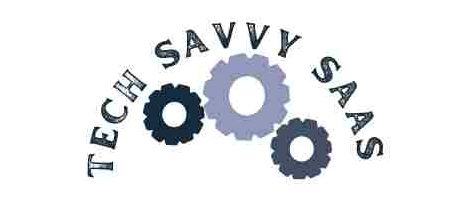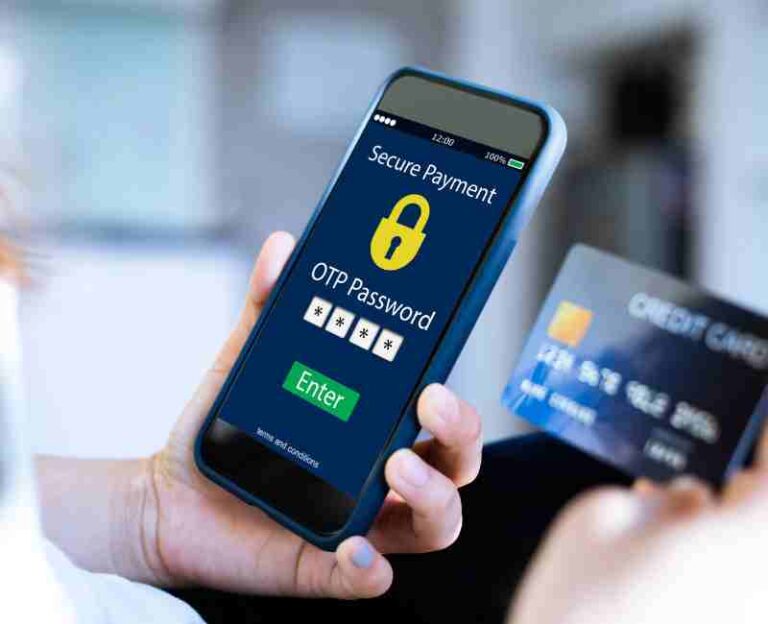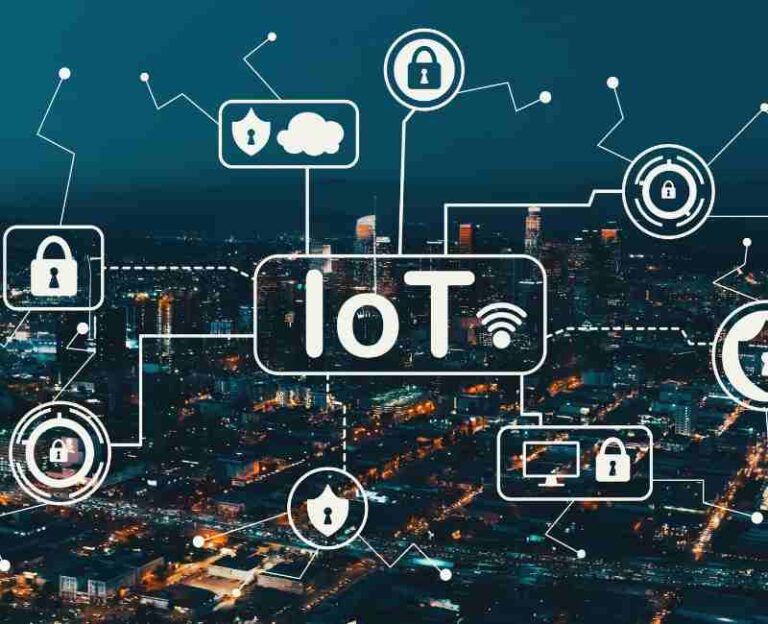The Dark Web is a hidden realm of the internet that is inaccessible to traditional search engines. Unlike the surface web, which consists of websites indexed by search engines, and the deep web, which includes password-protected sites, databases, and other content not accessible to the public, the dark web is intentionally concealed and requires specific tools like the Tor browser for access.
The Dark Web is a part of the internet that is intentionally hidden and requires specific software, configurations, or authorization to access. It is characterized by the use of non-standard communication protocols and ports, making it challenging to trace and monitor.
Understanding the intricacies of the Dark Web is crucial for comprehending the dynamics of cybercrime hideouts. Cybercriminals exploit the anonymity and privacy afforded by the Dark Web to conduct various illicit activities, including but not limited to the trade of stolen data, the sale of hacking tools, and the coordination of cyber attacks.

To navigate the discussion effectively, it’s essential to familiarize ourselves with key terms associated with the Dark Web:
| Term | Description |
|---|---|
| Web | Refers to the World Wide Web or the internet as a whole. |
| Dark | Signifies the hidden and obscured nature of the Dark Web. |
| Data | Information that is stored, processed, or transmitted. |
| Access | Permission to use or retrieve information or resources. |
| Security | Measures implemented to protect against unauthorized access or cyber threats. |
| Tor | The Tor network is a privacy-focused network enabling anonymous communication. |
| Threat | Any potential danger or harm, particularly in the context of cybersecurity. |
| Network | A system of interconnected computers or devices. |
| Intelligence | Gathering and analysis of information for decision-making. |
| Cyber | Relating to computers, information technology, and virtual reality. |
| Cybersecurity | The practice of protecting systems, networks, and programs from digital attacks. |
| Browser | Software for accessing and navigating the internet. |
Understanding these terms lays the groundwork for delving deeper into the complexities of the Dark Web and its association with cybercrime hideouts.
Unveiling the Dark Web
The Dark Web is a clandestine section of the internet intentionally hidden from traditional search engines. It operates on encrypted networks, making it accessible only through specific tools and configurations. Websites on the Dark Web often have addresses ending in “.onion,” indicating their hidden nature.
How does the Tor Browser provide anonymity and access?
The primary gateway to the Dark Web is the Tor browser (the Onion Router). It anonymizes users by routing their internet traffic through a series of volunteer-operated servers. This layered approach ensures that users’ identities and locations remain concealed, providing a secure means of accessing the hidden corners of the internet.
Differentiating the Dark Web from the Surface Web
While the surface web comprises publicly accessible websites indexed by search engines, the dark web intentionally conceals its content. Traditional search engines cannot index it, and accessing Dark Web sites requires specific software. This intentional obscurity fosters an environment conducive to privacy but also facilitates illegal activities.
The Role of VPNs in Accessing the Dark Web
Virtual private networks (VPNs) are often used in conjunction with the Tor browser to add an extra layer of security and anonymity. VPNs encrypt internet traffic, preventing even internet service providers from monitoring a user’s online activities. This added layer enhances privacy when accessing the Dark Web.
- More Post: How do you protect your personal Online?
Platforms and Forums
The Dark Web hosts a myriad of platforms and forums that serve as virtual meeting places for individuals with shared interests. These platforms facilitate the exchange of information, goods, and services, both legal and illicit. Notable examples include marketplaces, discussion forums, and social networks exclusive to the Dark Web.
Common Activities and Discussions in Hacker Forums
Hacker forums within the Dark Web are hubs for cybercriminal activities. Participants discuss and share information on hacking techniques, vulnerabilities, and tools. These forums also provide a marketplace for buying and selling stolen data, hacking services, and malware. The anonymity offered by the Dark Web fosters a thriving environment for these illicit transactions.
How do cybercriminals utilize these platforms?
Cybercriminals exploit the anonymity and privacy offered by dark web platforms for various illegal activities. These include the sale of stolen credentials, the distribution of malicious files, and the coordination of cyber attacks. The decentralized nature of these platforms makes it challenging for law enforcement agencies to track and apprehend cybercriminals operating within the Dark Web ecosystem.
Dark Web Marketplaces for Cybercriminal Activities
Dark Web marketplaces are notorious hubs within the hidden web where a wide range of illegal activities are orchestrated. These marketplaces function similarly to legitimate e-commerce sites but are dedicated to the trade of illicit goods and services. They are designed to ensure anonymity for both buyers and sellers, utilizing complex encryption and routing techniques inherent in the Dark Web.
Buying and Selling of Illegal Goods and Services on the Dark Web
In these hidden marketplaces, a vast array of illegal goods and services are traded. The most common items include:
- Stolen Data: This encompasses personal information, credit card details, and login credentials.
- Malware and Hacking Tools: Tools for cyberattacks, such as ransomware, spyware, and exploit kits.
- Illicit Substances: Sale of drugs and other controlled substances.
- Counterfeit goods: fake documents, money, and branded items.
- Hacker-for-Hire Services: Hiring cybercriminals for targeted attacks or espionage.
These marketplaces are designed to be user-friendly, with product listings, vendor ratings, and customer reviews. The transactions are conducted with a high level of secrecy and security, often accompanied by strict rules and guidelines set by marketplace administrators to maintain anonymity and avoid detection by law enforcement.
Types of Transactions and Cryptocurrencies Used in Dark Web Marketplaces
Cryptocurrencies are the lifeblood of financial transactions on the Dark Web due to their ability to facilitate anonymous and untraceable transactions. The most commonly used cryptocurrencies in these marketplaces include:
- Bitcoin (BTC) is the most popular cryptocurrency, known for its widespread acceptance and relative ease of use.
- Monero (XMR) is preferred for its enhanced privacy features, making transactions virtually untraceable.
- Ethereum (ETH) and other altcoins are occasionally used for their lower transaction fees and faster processing times.
Transactions in these marketplaces typically involve:
- Escrow Services: To build trust, marketplaces often hold the cryptocurrency in escrow until the transaction is confirmed by both parties.
- Multi-Signature Transactions: Some marketplaces use multi-signature transactions, requiring more than one key to authorize a transaction, adding an extra layer of security.
- Tumbler Services: These services are used to obscure the source of the funds, making transactions harder to trace back to the individuals involved.
- More Post: What is social engineering in cyber security ?
- More Post: What is IoT cybersecurity? Cybersecurity for Internet of Things (IoT) Devices
Cyber Threats and Actors
The Dark Web is rife with a multitude of cyber threats that have evolved over time. These include:
- Phishing attacks target individuals who want to steal sensitive data.
- Malware Distribution: Including ransomware, spyware, and trojans.
- DDoS Attacks: Overwhelming servers to disrupt services.
- Data breaches: selling stolen data from corporations and individuals.
- Identity Theft: Utilizing personal information for fraudulent activities.
The Evolution of Cyber Threats Over Time
Cyber threats have become increasingly sophisticated, evolving from simple viruses to complex, multi-layered attacks. Developments include:
- Advanced Malware: Utilizing sophisticated techniques to evade detection.
- AI-Powered Attacks: Leveraging artificial intelligence to enhance the effectiveness of cyberattacks.
- Targeted Ransomware Campaigns: Focusing on high-value targets for larger payouts.
- Cryptojacking is the unauthorized use of someone else’s computing resources to mine cryptocurrency.
How Does Threat Intelligence Play a Role in Combating Cyber Threats?
Cyber Threat Intelligence (CTI) is critical to understanding and mitigating these threats. It involves:
- Gathering Information: About current and potential threats.
- Analyzing Data: To identify patterns and tactics used by cybercriminals.
- Strategic Planning: Helping organizations anticipate and prepare for potential threats.
- Sharing Information: With other entities to improve overall cybersecurity posture.
Major Cybercriminal Organizations
These organizations often operate like legitimate businesses but focus on illegal activities. They are known for their:
- Hierarchy and Structure: often having a clear chain of command.
- Global Reach: operating across borders, often in regions with lax cybersecurity laws.
- Sophistication and Specialization: With members specializing in various aspects of cybercrime,.
Their Structure, Goals, and Activities in Notorious Cases
Key aspects include:
- Goals range from financial gain to political motives.
- Activities include hacking, data theft, and selling illicit goods and services.
- Notorious Cases: Such as the Silk Road marketplace or significant data breaches.
Case Studies on Key Hackers and Notorious Cybercriminals
Examining specific cases provides insights into their methods and motivations. Examples might include:
- Individual hackers, like those responsible for high-profile data breaches,.
- Organized groups, such as APT (Advanced Persistent Threat) groups known for state-sponsored attacks,.
- Notable cybercrimes include significant ransomware attacks or widespread data theft operations.
Tools Utilized by Cybercriminals for Attacks
Cybercriminals on the Dark Web employ a variety of sophisticated tools to conduct their activities. These include:
- Malware kits are ready-made software for creating viruses, ransomware, or trojans.
- Exploit Kits: Tools that automatically find and exploit vulnerabilities in software.
- Botnets are networks of compromised computers used to launch distributed attacks.
- Keyloggers are software programs that record keystrokes to capture sensitive information.
- Remote Access Trojans (RATs): giving attackers remote control over an infected device.
Techniques Employed to Bypass Security Measures
To successfully conduct their activities, cybercriminals use advanced techniques such as:
- Phishing scams: tricking users into revealing sensitive information.
- Social engineering: manipulating individuals to breach security protocols.
- Encryption Bypasses: Using tools to decrypt or bypass encrypted data.
- Zero-Day Exploits: Attacking software vulnerabilities before they are patched.
- Obfuscation Techniques: Altering code to avoid detection by antivirus software.
The Dark Web as a Hub for Sharing Hacking Tools
The Dark Web serves as a crucial hub for the distribution and development of hacking tools.
- Forums and Marketplaces: Where cybercriminals buy, sell, or exchange tools and services.
- Knowledge Sharing: Experienced hackers share insights, tactics, and tutorials.
- Custom Tool Development: Cybercriminals often commission the development of tailored tools for specific attacks.
- Feedback and Improvement: Continuous improvement of tools based on user feedback and technological advancements.
Cybersecurity on the Dark Web
Recognizing the significance of cybersecurity on the Dark Web is paramount, as it directly influences the protection of sensitive information and mitigates the impact of cyber threats. Key considerations include:
- Data Protection: Safeguarding against unauthorized access and potential data breaches.
- Privacy Preservation: Maintaining anonymity while ensuring ethical practices.
- Preventing Illicit Activities: Thwarting cybercriminals attempting to exploit vulnerabilities.
Strategies to Protect Against Cyber Threats
Implementing effective cybersecurity strategies is crucial to defending against the diverse range of threats on the Dark Web.
- Firewalls and antivirus software are essential for detecting and blocking malicious activities.
- Regular Security Audits: Identifying and Patching Vulnerabilities in Systems.
- User Education and Training: Ensuring individuals are aware of and can avoid potential threats.
- Multi-Factor Authentication (MFA): Adding an extra layer of security beyond passwords.
- Secure Communication Channels: Encrypting communications to prevent eavesdropping.
Role of Threat Intelligence in Enhancing Security
Threat intelligence (TI) is a proactive approach to cybersecurity, involving:
- Continuous Monitoring: Keeping abreast of emerging threats and vulnerabilities.
- Analysis of Dark Web Activities: Gaining insights into potential attacks before they occur.
- Strategic Planning: Formulating effective countermeasures based on threat intelligence.
- Information Sharing: Collaborating with industry peers and law enforcement agencies.
Legal Actions Against Cybercriminals and Organizations
Addressing cybercrime on the Dark Web involves:
- Legislation and Jurisdiction: Implementing and enforcing laws that transcend borders.
- Arrests and Prosecutions: Holding individuals and organizations accountable for illegal activities.
- Seizure of Assets: Disrupting the Financial Incentives Behind Cybercrime.
Challenges in Prosecuting Cybercrime Cases
Prosecuting cybercrime cases poses unique challenges:
- Anonymity and pseudonymity: difficulty in identifying individuals behind online personas.
- Jurisdictional Issues: Determining which laws apply when activities span multiple jurisdictions.
- Evidentiary Challenges: Admissibility of digital evidence in court.
International Cooperation to Combat Cyber Threats and Involvement of Law Enforcement Agencies
Collaboration between nations and law enforcement agencies is essential.
- Information Sharing: Facilitating the exchange of intelligence to combat global cyber threats.
- Joint Task Forces: Coordinated efforts to investigate and apprehend cybercriminals.
- International Agreements: Developing frameworks to streamline cross-border legal processes.
Key Takeaways
- Understanding the Dark Web: Insight into the structure and purpose of the Dark Web, distinguishing it from the Deep Web and Surface Web.
- Exploring Tools and Techniques: The various tools and methods employed by cybercriminals, including malware, exploit kits, and phishing scams.
- Unveiling Hacker Forums and Marketplaces: An overview of the platforms where illegal activities like data breaches and sales of illicit goods occur.
- Cyber Threats and Actors: The Evolution of Cyber Threats, the Role of Threat Intelligence, and Insights into the Structure of Cybercriminal Organizations.
- Cybersecurity Measures: Strategies to safeguard against cyber threats, highlighting the importance of multi-layered security measures.
- Legal Implications: The complexities of legal actions against cybercrime, emphasizing international cooperation and law enforcement challenges.
Emphasizing the Significance of Cybersecurity Awareness
- Proactive Defense: The necessity of staying informed about emerging cyber threats and defensive strategies.
- Regular Updates and Training: Keeping cybersecurity knowledge and practices up-to-date to effectively counteract evolving threats.
- Collaborative Security: The role of collaboration among businesses, cybersecurity experts, and law enforcement in forming a united front against cybercrime.
- Ethical Responsibility: Recognizing the importance of ethical behavior in navigating and utilizing the Dark Web.
- Global Impact: Understanding that cybersecurity is not just a local issue but a global concern, requiring coordinated efforts across borders.
FAQ
What is the Dark Web?
The Dark Web is a part of the internet that is not indexed by traditional search engines and requires a special browser, like the Tor Browser, to access. It is known for its anonymity and is often associated with various illegal activities.
How is the dark web different from the deep web?
The Deep Web refers to all parts of the internet that are not indexed by search engines, which includes mundane things like private databases and subscription-based content. The Dark Web is a small, more concealed segment of the Deep Web, often used for illicit purposes.
Is it illegal to access the dark web?
Simply accessing the Dark Web is not illegal, but engaging in or facilitating illegal transactions or activities there is against the law. Users should also be aware of the potential risks and ethical implications.
What Are Common Cyber Threats Found on the Dark Web?
Common threats include malware distribution, the sale of illegal substances, cyberattack planning, data breaches, and the trading of stolen data.
Can cyber-threat intelligence (CTI) help combat dark web activities?
Yes, CTI plays a crucial role in understanding and mitigating threats emanating from the Dark Web by providing insights into hacker tactics, techniques, and procedures.
How Can Individuals Protect Themselves Against Dark Web Threats?
Individuals can protect themselves by using strong, unique passwords, enabling multi-factor authentication, staying informed about cybersecurity practices, and using security software.
Are law enforcement agencies able to track criminal activity on the dark web?
While challenging due to the anonymity features of the Dark Web, law enforcement agencies, through specialized units and international cooperation, have successfully infiltrated and taken down various criminal operations.
- More Post: Cybersecurity Tips for Remote Workers
- More Post: What is two-factor authentication and why is it important?
Conclusion
The Dark Web plays a critical role in the landscape of cybercrime, serving as a platform for illicit activities and a meeting ground for cybercriminals. Understanding its dynamics is crucial for cybersecurity and law enforcement professionals.
Strengthening Defenses: Organizations and individuals must prioritize robust cybersecurity measures to protect against the threats emanating from the Dark Web.
Continuous Education: Keeping abreast of the latest cyber threats and defense mechanisms is essential in this ever-evolving digital landscape.
Awareness: It’s imperative for users to be aware of the risks and legal implications associated with the Dark Web.
Proactive Stance: Adopting a proactive approach to cybersecurity practices can significantly mitigate the risks associated with cyber threats.
Collaboration: encouraging collaboration between the private sector, cybersecurity communities, and law enforcement agencies in the fight against cybercrime.
In conclusion, while the Dark Web remains a complex and often misunderstood aspect of the internet, understanding its role in cybercrime is key to developing effective strategies for combating cyber threats. Enhanced cybersecurity awareness and vigilance are vital to navigating and securing the digital world.






